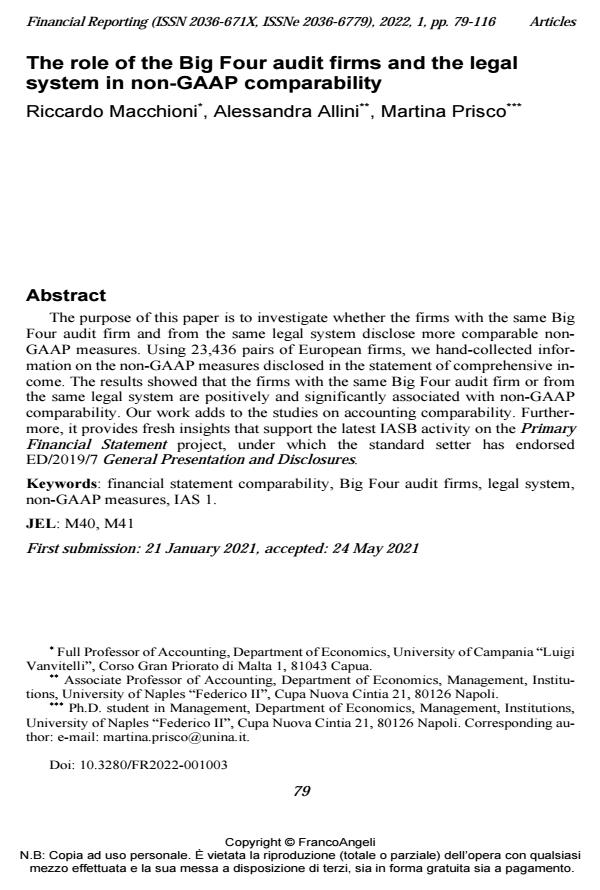The role of the Big Four audit firms and the legal system in non-GAAP comparability
Titolo Rivista FINANCIAL REPORTING
Autori/Curatori Riccardo Macchioni, Alessandra Allini, Martina Prisco
Anno di pubblicazione 2022 Fascicolo 2022/1
Lingua Inglese Numero pagine 38 P. 79-116 Dimensione file 273 KB
DOI 10.3280/FR2022-001003
Il DOI è il codice a barre della proprietà intellettuale: per saperne di più
clicca qui
Qui sotto puoi vedere in anteprima la prima pagina di questo articolo.
Se questo articolo ti interessa, lo puoi acquistare (e scaricare in formato pdf) seguendo le facili indicazioni per acquistare il download credit. Acquista Download Credits per scaricare questo Articolo in formato PDF

FrancoAngeli è membro della Publishers International Linking Association, Inc (PILA)associazione indipendente e non profit per facilitare (attraverso i servizi tecnologici implementati da CrossRef.org) l’accesso degli studiosi ai contenuti digitali nelle pubblicazioni professionali e scientifiche
The purpose of this paper is to investigate whether the firms with the same Big Four audit firm and from the same legal system disclose more comparable non-GAAP measures. Using 23,436 pairs of European firms, we hand-collected infor-mation on the non-GAAP measures disclosed in the statement of comprehensive income. The results showed that the firms with the same Big Four audit firm or from the same legal system are positively and significantly associated with non-GAAP comparability. Our work adds to the studies on accounting comparability. Furthermore, it provides fresh insights that support the latest IASB activity on the Primary Financial Statement project, under which the standard setter has en-dorsed ED/2019/7 General Presentation and Disclosures.
Parole chiave:financial statement comparability, Big Four audit firms, legal system, non-GAAP measures, IAS 1.
Jel codes:M40, M41
Riccardo Macchioni, Alessandra Allini, Martina Prisco, The role of the Big Four audit firms and the legal system in non-GAAP comparability in "FINANCIAL REPORTING" 1/2022, pp 79-116, DOI: 10.3280/FR2022-001003